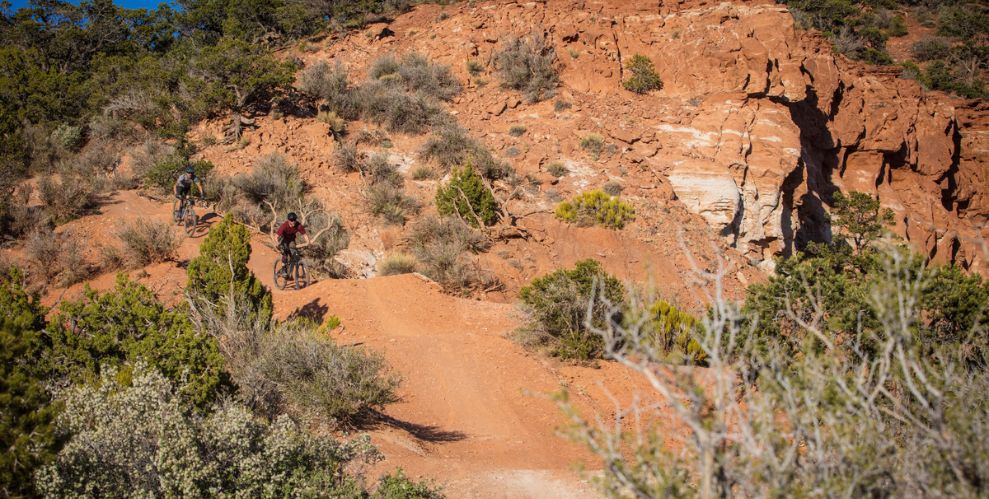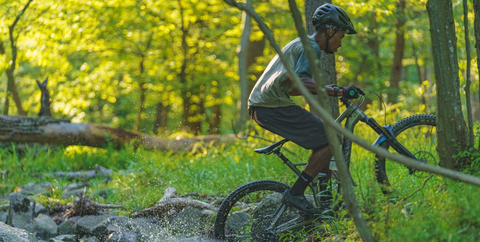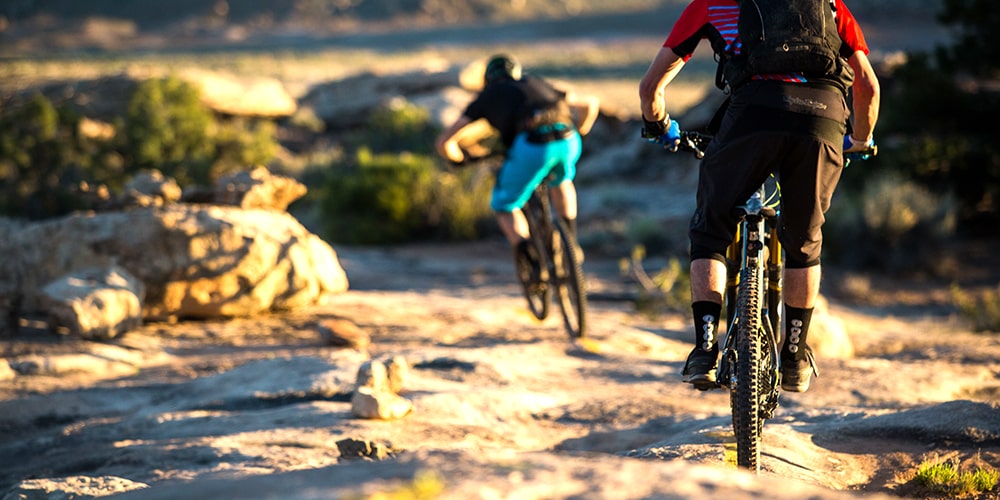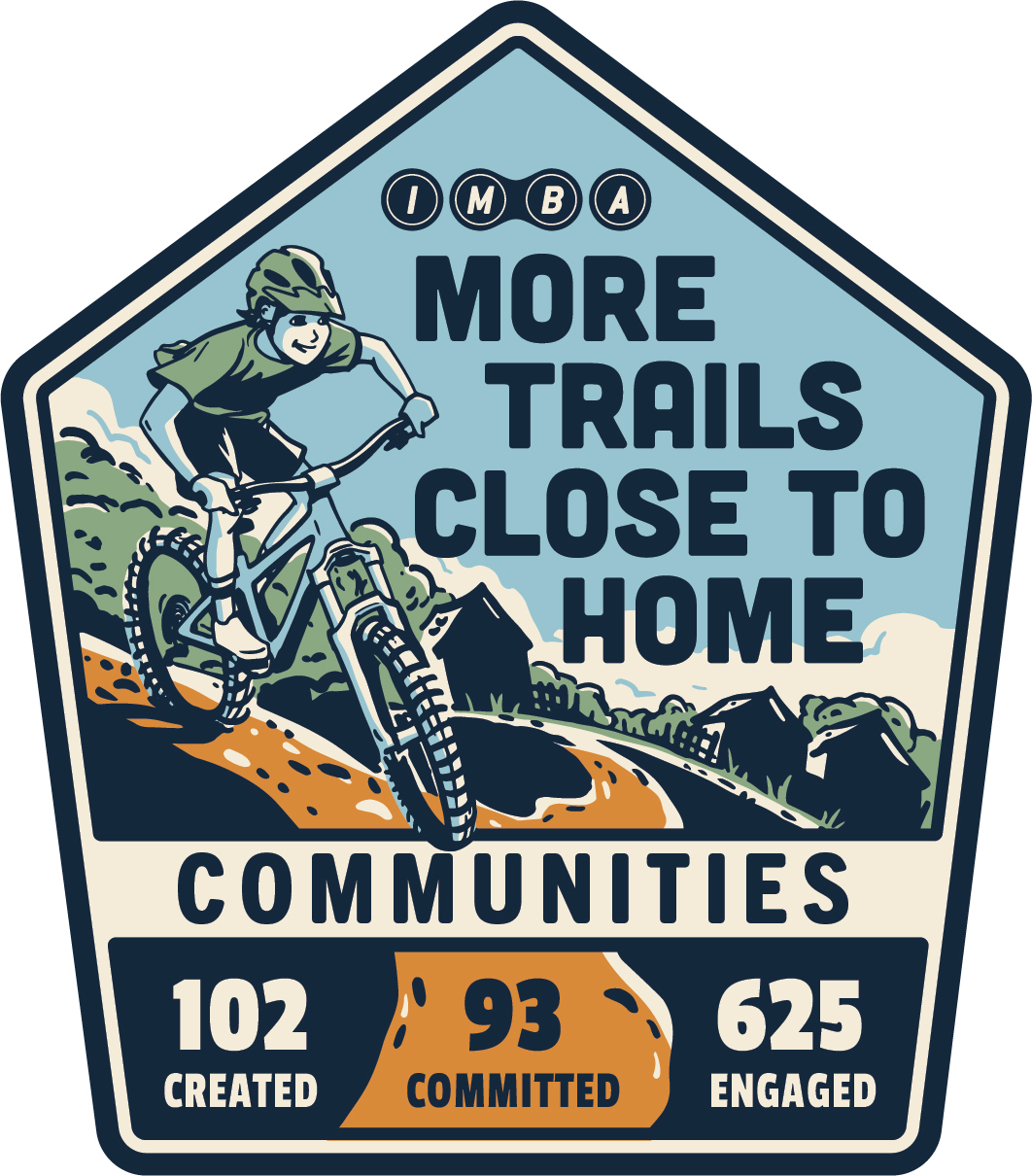Protect Funding for Maryland’s Trails
One of the greatest resources we have for long-term conservation is the growing demand for recreational access on America’s public lands. It motivates, compels, and mobilizes a host of individuals to visit, volunteer, donate, apply political pressure, and support measures that result in well-conserved lands. Philanthropic activities by hundreds of thousands of mountain bikers and IMBA members occur across our public lands, including those managed by the Bureau of Land Management (BLM). We estimate IMBA members contribute over one million volunteer hours every year, providing our land management partners millions of dollars in cost savings. It is this stewardship ethos that guides us in support of the addition of “conservation” to BLM’s multiple use mandate.
During the development process for the BLM’s Public Lands Rule, IMBA engaged BLM field staff as well as leadership in the BLM’s Washington D.C. office to provide our thoughts on the highlights of the proposed rule, as well as deep concerns we shared with other outdoor recreation partners. Our comments reflected the compatibility of the rule with recreation. Better management of resources makes land health more flexible and sustainable, affording continued variety of public use. As the largest land management agency, the BLM is host to hundreds of miles of some of the best mountain biking trails in the world. You were likely among the over 1000 commenters who provided perspective on how this rule could positively impact mountain biking. We’re in this together.
The establishment of the new rule does not change current management on BLM lands. However, as management plans are renewed and updated, this new paradigm will be applied moving forward. It will help guide the inclusive, well-informed management of the future of BLM lands. Trail advocates and mountain bikers will need to, as always, continue to engage in the public comment aspects of the NEPA process. Armed with the knowledge of the landscapes the NEPA process addresses, as well as this rule and other relevant agency regulations, advocates can better inform and influence the process for their goals. IMBA staff remain committed to helping assist local mountain bikers and organizations in navigating the increasingly complex federal regulatory structure. Read on for a brief summary of the Rule.
A Mountain Bike Advocate's Brief Summary of Key Components of the BLM Public Land Rule
This summary is for the trail advocate to employ a cursory understanding of the rule. For a deep dive into the components of the Rule, how our comments helped shape it, as well as more discussion on these issues, please read our full analysis.
Expanding Recreation
The BLM writes: “The rule is not intended to prevent or decrease outdoor recreation use; rather it ensures that recreation on public lands can be managed and grow sustainably while benefiting from the conservation of healthy lands and water.” This statement was added in the final rule through conversations with IMBA and other recreation partners.
Compatibility of Recreation
The rule states: “While a restoration or mitigation lease is in place, casual uses of the leased lands, such as recreation, hunting and fishing, and research activities, would generally continue.” even if a temporary closure is warranted. This was in response to our request for a clear definition of what activities could be compatible with a restoration or mitigation lease.
Incentivized Collaboration
The BLM has incentivized Restoration and Mitigation lease applicants to “collaborate with existing permittees and other affected interests and meet other desirable criteria” in order to minimize negative impacts to other existing uses like recreation. Our goal is to ensure we are always allying with the BLM and others as land decisions are being made.
Cost of Trail Impacts
Unfortunately the BLM leaves open the concept of applying compensatory mitigation requirements to recreational uses through a mitigation hierarchy.
Our position is that trails exist for the common good and are actively managed to avoid unintended impacts. Compensation is intended for unavoidable impacts by for-profit corporations when avoidance and minimization were not possible.
Intact Landscapes
Keeping landscapes intact was one of the main focuses of the new rule, with fragmentation coming from roads, fences, dams, and agricultural, urban, and industrial development. We worked with BLM to ensure trails are not inherently considered as contributing to fragmentation of these landscapes.
Areas of Critical Environmental Concern (ACEC)
Designation of ACEC’s will continue to be done through the BLM planning process and could impact existing and future trail development. The BLM understands that recreation and resource conservation are not mutually exclusive when planned and well managed, however it is our responsibility as advocates to be aware of resource issues on broader landscapes.
Tribal Nations and Environmental Justice
It is important for advocates to continue to build strong relationships to promote how trails contribute to healthy communities and are common ground public assets. This is an opportunity to expand the reach and value of mountain biking so that trails may stand up against more impactful land uses or replace them with sustainable recreation.
Casual Use vs. Significant Causal Factor
BLM defines recreation as a “casual use” or as “any short-term, noncommercial activity that does not cause appreciable damage or disturbance to the public lands or their resources or improvements and that is not prohibited by closure of the lands to any such activity.” They define a “significant causal factor” as “a use, activity, or disturbance that prevents an area from achieving or making significant progress toward achieving one or more land health standards”. The key to protecting access when unacceptable impacts occur will be by working with BLM to employ adaptive management modifications to achieve landscape objectives.
On August 12, 2024, IMBA Government Affairs hosted leaders from the Bureau of Land Management to discuss the Public Lands Rule and the Blueprint for 21st Century Outdoor Recreation. View the recorded webinar.
For more ways to connect, check out tips and resources on engagement and advocacy on IMBA.com. Fill out the Action Cultivator Tool to get assistance from IMBA specialists on your access and advocacy strategies.







